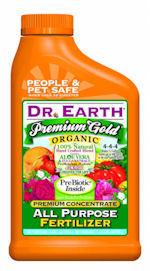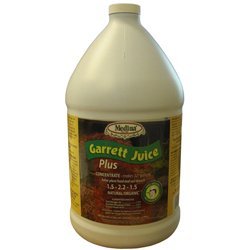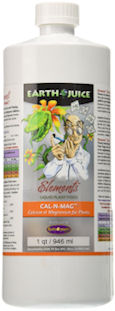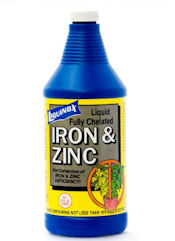Let me say this article could have been a LOT longer, things get complicated and there are so many variables when you get into soil science and the soil food web, but this is about a quick fix to the most common reasons gardens look bad, produce poorly and are over effected by pests. Let’s start out with a fact, the stronger your plants are the less they will be effected by insect pests. This article addresses that, it doesn’t address “organic pest control” like neem oil, using DE, etc.
Okay, so your plants need the following to thrive, nutrients, water and healthy soil. Starting out, no matter what myths you have heard about nitrogen being “bound up” by wood mulch, mulch with wood, about 2-4 inches in depth. Yes the carbon in the wood will bind up with some of the nitrogen in the top layer of the soil, it will also break down and give it back over time. And it won’t matter if you give up a bit of it as you are about to see.
Next I know what is en vogue is “let nature do it” and in time you can indeed do so. When you are first establishing a garden though it takes time for soil organisms to get going and build up a strong soil food web. If I try to explain all of that, then this brief article will become a small book so just accept this for now. We need beneficial nematodes, soil fungi, good bacteria and many other tiny organisms doing their thing and something called plant exudates interacting with them to get this going. In the mean time we are just going to give your plants what they need and season after season they will need less of it as you build soil
The truth is plants use many minerals, nutrients and micro nutrients but the following are the most important to growing healthy veggies because they tend to be so necessary and often lacking in new garden beds. Often they are there but until the soil life gets going many are in non bio available forms. So what we want to do is supplement them but we DO NOT want to do anythign that harms the soil life because in time we want nature to do as much work as possible and reduce our inputs, so we use all organic amendments.
The most often lacking needed nutrients in a garden bed are…
- Nitrogen
- Phosphorus
- Potassium
- Calcium
- Magnesium
- Iron
- Zinc
- Everything Else
 Need One- Nitrogen Phosphorus and Potassium.
Need One- Nitrogen Phosphorus and Potassium.
This is also known as NPK, most standard fertilizers organic and conventional are based on an NPK Ratio, if you look at the back of a fertilizer and it says, 5-6-2 that means it is 5 parts Nitrogen, 6 Parts Phosphorus and 2 Parts Potassium. It also means that it is 87 parts something else, likely water, inert matter, etc. Because 100 parts is the total, 5+6+2=13 and 100-13=87, got it?
So we are going to use a balanced NPK fertilizer My favorite is Dr. Earth 1014 Premium Gold Organic All-Purpose Fertilizer. It is a 4-4-4 fertilizer giving equal amounts of NPK which I personally feel is very important. It is also liquid and in a form that makes it immediately available to your plants and yet it feeds for a long times as well. Just use it according to the label. And give your plants a good drench of it.
 Next as part of our NPK regiment and in order to get biological life going and cut down on pest pressure we are going to use my all time favorite foliar feed, (that means we spray it on the plants and they directly absorb it.) It is called Garrett Juice Plus, it is made up of Apple Cider Vinegar, Compost Tea, Molasses, Dehydrated Seaweed, Liquid Fish, and Water.
Next as part of our NPK regiment and in order to get biological life going and cut down on pest pressure we are going to use my all time favorite foliar feed, (that means we spray it on the plants and they directly absorb it.) It is called Garrett Juice Plus, it is made up of Apple Cider Vinegar, Compost Tea, Molasses, Dehydrated Seaweed, Liquid Fish, and Water.
Garrett Juice Plus is a terrific foliar plant food developed by the Dirt Doctor, Howard Garrett. I use the plus version because you get a nitrogen boost of liquid fish.
It has an NPK of 1.5-2.2-1.5, not a perfect balance but good enough. To use it mix 2 oz. of Garrett Juice per a gallon of water. Shake well before use. Spray the entire leaf surface of the plant weekly. Apply in early morning or in the evening. This means a gallon lasts a full season or more.
With this you will be off to a great start and that tiny bit of N bound up in your mulch for a while means nothing. If you want to you can also put a bit of blood and bone meal in the hole when you set transplants or plant seeds. It helps but if you use these two products you likely won’t need it.
Need Two – Calcium and Magnesium
 Next we are going to turn to Calcium and Magnesium. These two are often deficient and you really need both in order for the plants to absorb them and use them well. Calcium deficiency is usually caused due to low calcium availability or due to water stress which results in low transpiration rates. The symptoms of calcium deficiency include curling of young leaves or shoots scorching or spotting on young leaves, poor growth, leaf tip burns, stunted roots, and damage to fruit.
Next we are going to turn to Calcium and Magnesium. These two are often deficient and you really need both in order for the plants to absorb them and use them well. Calcium deficiency is usually caused due to low calcium availability or due to water stress which results in low transpiration rates. The symptoms of calcium deficiency include curling of young leaves or shoots scorching or spotting on young leaves, poor growth, leaf tip burns, stunted roots, and damage to fruit.
Magnesium deficiency, like any deficiency, leads to reduction in yield. It also leads to higher susceptibility to plant disease. Since magnesium is mobile within the plant, deficiency symptoms appear on lower and older leaves first. The first symptom is pale leaves, which then develop an interveinal chlorosis, which is yellowing of the leaves between the veins with the veins remaining green. In some plants, reddish or purple spots will appear on the leaves.
The expression of symptoms is greatly dependent on the intensity to which leaves are exposed to light. Deficient plants that are exposed to high light intensities will show more symptoms. Any of that sound familiar to you? Now as plants need calcium and magnesium together to effectively utilize both, most supplements come as a combination.
The best product I have found for this need is, Hydro Organics Earth Juice Cal-n-Mag Plant Food. Again this is a liquid form, and that makes it available instantly. We are also going to use it first as a drench and then in follow up treatments as a foliar feed. You can even just mix it with Garrett juice and do it all at one time, how simple and easy is that?
Need Three – Iron and Zinc
 Much like calcium and magnesium, iron and zinc are best utilized together by plants, and people too for that matter.
Much like calcium and magnesium, iron and zinc are best utilized together by plants, and people too for that matter.
The most obvious symptom of iron deficiency in plants is commonly called leaf chlorosis. This is once again where the leaves of the plant turn yellow, but the veins of the leaves stay green. Typically, leaf chlorosis will start at the tips of new growth in the plant and will eventually work its way to older leaves on the plant as the deficiency gets worse. Other signs can include poor growth and leaf loss, but these symptoms will always be coupled with the leaf chlorosis.
And what do you think zinc deficiency looks like, um, it is mostly chlorosis. See how this is beginning to sound like a broken record! Some other symptoms are, necrotic spots where leaf tissue has died due to chlorosis. Stunted plants including stunted leaves, leaves that are smaller than normal and malformed leaves are also symptoms. As you might imagine my favorite product here is once again a liquid. It is Liquinox Iron Zinc Chelated Solution. Again just follow the lable instructions but I recommend starting with a good soil drench then going to a foliar feeding schedule.
Again you can mix this right in with Garrett juice but I recommend you take your Iron, Zinc, Magnesium and Calcium foliar feed to monthly so long as your plants look happy.
Need Four – Everything Else
No doubt some experienced gardeners have read this and thought, well some of those symptoms could be boron, manganese, copper, molybdenum, or something else. However in my experience most failed back yard gardens or ones that simply do not thrive are almost always made better by the treatments above, we can then go full spectrum on everything else using a product called, Azomite.
Azomite is a highly mineralized complex silica ore, mined in Utah from an ancient deposit left by an volcanic eruption that filled a small nearby seabed an estimated 30 million years ago. It is used as a naturally rich soil re-mineralizer for plants, as well as a feed ingredient for animals. Azomite contains more than 70 trace minerals which include many that have been depleted from soils worldwide. In the end any product marketed as Azomite is from the same source so I don’t really have a favorite brand.
The question really is how much do you need. If you are establishing a new large bed you can buy large bags say 40 pounds or more and amend the entire bed. If you just run a few beds you can just sprinkle a bit in each hole when you set plants out or sprinkle a bit in furrows when you direct seed the choice is yours. I also always amend my beds with green sand. Per 4×8 area I apply one 50 pound bag of it worked in when I establish the bed. I do not use it on an ongoing basis.
Some Final Notes
Again there is a lot unsaid here, such as if you have high PH water this can actually cause a lot of deficiencies even if the minerals are in your soil. Sometimes hard water that is loaded with calcium actually causes calcium and magnesium deficiency because it is so out of balance. That is why for simplicity sake I go with liquid balanced amendments for calcium, magnesium, iron and zinc. You know they will be absorbed, period even if only by foliar application.
In time you become more in tune with your plants, your soils, your water, etc. You know what to look for and by developing healthy soils, most problems fix themselves in time leading to less and less use of amendments and fertility aids. Simply mulching and adding compost every season or better yet, between seasons like spring/summer than fall/winter will do a lot of good. Yet I see person after person with the same problems online and most are simply advised to use some organic pest treatment or to “add compost” and they remain frustrated.
I am not saying the above approach will solve all garden problems, what I am saying is as long as you mulch, as long as you don’t over or under water and as long as you do the above and continue to add fertility with compost and organic matter it will give 95% or more of people a happy, healthy and productive garden.
Lastly I realize some will criticize this and say, that is just a toss it all on and hope method or perhaps something like, you are just bringing in a lot of inputs. Again let me stress, new beds take time to develop the life in the soil necessary for nature to do her job. If your soil is healthy and your plants are happy none of this is necessary. But if you have weird shaped leaves, yellow leaves, sluggish or stunted plants you can hold your breath or you can fix the dang problem with a few watering cans and a sprayer.
The other thing you will do is eliminate the most common problems, this means if you still have a problem it will be a lot easier to figure out. And yes there is a ton you can do to go further, I grow comfrey and use it for dynamic accumulation as a mulch, I also make liquid green manure with it. I add worm castings, I plant inter season cover crops, etc. What is presented here is a quick way to get going strong, and improve from there.
Lastly many buy pre mixed soils, bulk composts, or make something like “Mel’s Mix” of square foot gardening fame. These soils often look great, they smell great and they have a lot going for them. However they often either lack some of these nutrients or often again the soil life web has not yet gotten up to speed. Sadly many people figure since they mixed up “super soil” that something else must be wrong.
In the end, 90% of the time, if you have yellow or deformed plants and give them the N-P-K they need along with Iron, Zinc, Magnesium and Calcium, the problem either goes away or gets a lot better. Again you can either fix the problem or stare at yellow leaves on your peppers and sagging leaves on your squash while holding your breath and waiting for it to fix itself, the choice is yours.
So Does it Work?
Well I have been doing this a long time. While I have now focused more on perennials and livestock, yes it does, to that end, this is my garden all the way back in 2010. Six years ago, again, this isn’t something we just started yesterday, this is what healthy plants look like and the basics above are how we have always done it.
Editors Note – All links to Amazon in this article do go to our affiliate links. While we appreciate you supporting us these are simply the products we use, if you can source them locally or find a product that is as good or better, we totally support that as well. The primary reason we provide links is so you know exactly the products we are recommending. Not to make affiliate sales.

On the amendments that should be added during planting (in the holes) or mixed in with the soil during bed construction, what do you do if you failed to add those? We blew it and did no research ahead of time and filled out beds with bagged soil and compost. We can obviously do the foliar and liquid amendments now easily enough… But what about the other stuff? Thanks for this Jack! Really helps!
Best thing to do now, pull back the mulch and sprinkle around the plants, water in a bit. Or just return the mulch and apply your other stuff and it will water it in, what won’t work is putting it on top of the mulch. You can simply add this stuff the next time you do a bed overhaul, as I said if you get NPK, and the 4 big ones right, most problems will be minimal.
Thanks Jack!
Pingback: Survival Podcast - Expert Council Q&A for 5-20-16
Thanks for posting this Jack! I am gonna try it your way this year using the liquid fertilizers.
I started using Larry Hall’s gutter gardening approach last year and got ok results.
Is there anything that I to change to use this with container gardening vs garden beds?
Thanks.
It can be more important to supplement in containers, as you only have what you put in. A good mix of azomite and green sand will help in your container mixes. But yea use the same stuff, just once your plants are looking really good back off and only give them what they need.